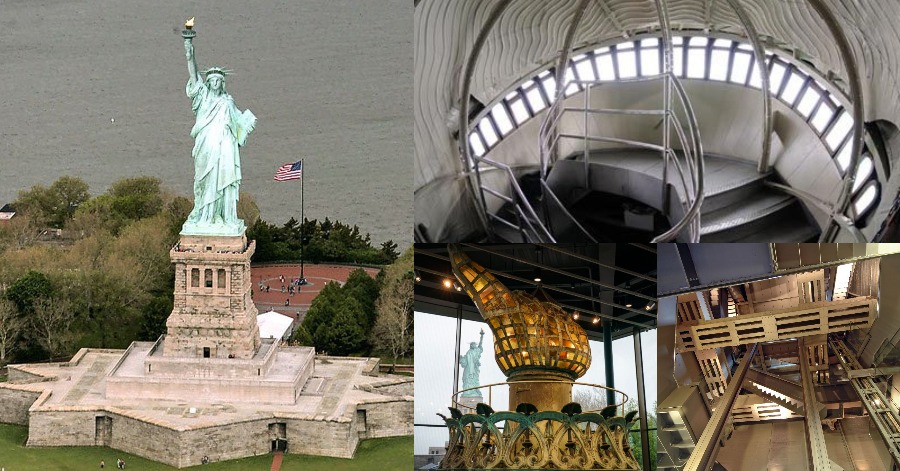The Statue of Liberty is a colossal neoclassical sculpture on Liberty Island in New York Harbor within New York City, in the United States. The copper statue is a gift from the people of France to the people of the United States. It was designed by French sculptor Frédéric Auguste Bartholdi and its metal framework was built by Gustave Eiffel.
The statue is a figure of Libertas, a robed Roman liberty goddess. She holds a torch above her head with her right hand, and in her left hand carries a tabula ansata inscribedJULY IV MDCCLXXVI which means July 4, 1776, in Roman numerals, the date of the U.S. Declaration of Independence. A broken shackle and chain lie at her feet as she walks forward, commemorating the recent national abolition of slavery. After its dedication, the statue became an icon of freedom and of the United States, seen as a symbol of welcome to immigrants arriving by sea.
The interior of the structure is a collection of wrought iron rivets, saddles, and armature bars that make the statue structurally sound, and a double helix metal staircase is centered among them. Alexander Gustave Eiffel, a structural engineer who later designed the Eiffel Tower for the 1889 Universal Exposition in Paris, was hired to help design the interior tower that supports the statue. The contrast between the sculpted exterior of the monument with the webs of beams and posts of the interior is striking. The climb is strenuous, up tapered stairs that are only 19 inches wide. Clearance is 6 feet 2 inches and children must be at least 4 feet tall to make the climb. An observation deck with a view of New York Harbor is accessible by climbing 192 stairs.
For the head and the crown, there are twenty-five windows in the crown that evoke shining gemstones. First-time visitors to the crown may be surprised by how small the space is — only eight to 10 people fit at a time. The view from the crown encompasses lower Manhattan, the rivers and bridges, part of Brooklyn, and Staten Island. The wait to make the 354-step, 22-story climb to the Statue of Liberty’s crown can be as long as three hours, and the statue is closed on very hot days.
The torch has been closed to the public since July 30, 1916, when German agents blew up ammunition supplies in Jersey City, NJ, in what came to be known as the Black Tom explosion. Fragments from the explosion hit the Statue of Liberty’s skirt and torch, causing $100,000 in damage. National Park Service staff use a narrow ladder to climb 40 feet into the torch to maintain the floodlights. The gilded torch was refurbished in 1986.
Sources: YouTube Jared Owen.









Leave a Comment